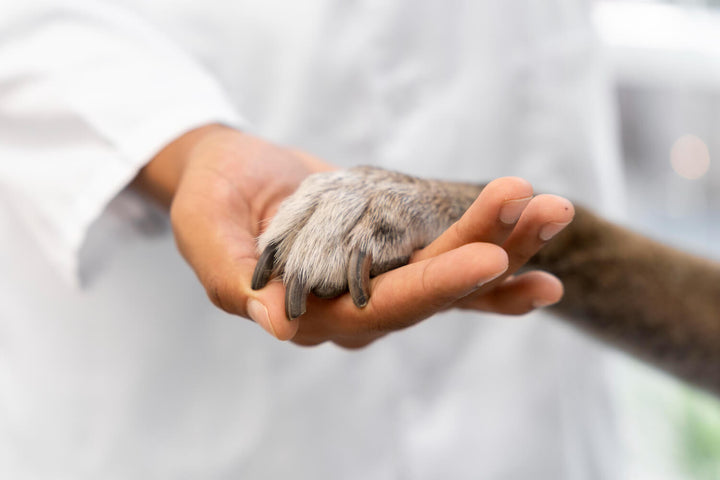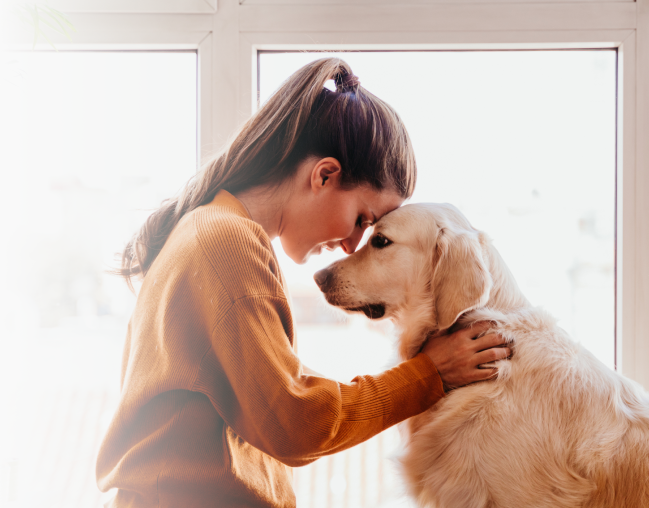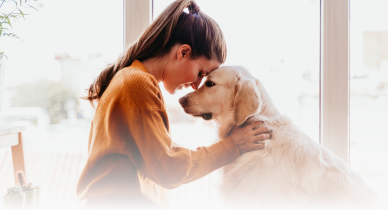Dachshunds, often affectionately referred to as "wiener dogs" due to their unique elongated body, are a charming and lively breed with a history dating back centuries. Originally bred in Germany for hunting purposes, these small yet courageous dogs have won the hearts of dog enthusiasts worldwide. Their distinctive appearance and spirited personality make them stand out in the dog world.
Did You Know these Facts about the Dachshund?
-
Dachshunds were bred in the 15th century to hunt badgers and other burrowing animals. Their elongated bodies and short legs were specifically designed for tracking and digging.
-
They come in three sizes: standard, miniature, and kaninchen (rabbit-sized). Each size has its unique charm and characteristics.
-
Dachshunds boast three coat types - smooth, longhaired, and wirehaired - each with its distinct look and grooming needs.
-
Known for their fearless nature, Dachshunds are curious explorers and loyal companions. Their tenacity and energy can sometimes lead to unexpected adventures.
-
Dachshunds have captured the hearts of many, including famous personalities like Pablo Picasso, Andy Warhol, and John F. Kennedy.
The Dachshund's popularity is undeniable. Ranked #9 among AKC's top breeds, they consistently hold their ground as beloved pets. Their playful demeanor, compact size, and adaptability to various living conditions have contributed to their enduring popularity.

Traits of the Dachshund Breed
Personality. Dachshunds are known for their spirited and independent nature. They possess a unique blend of courage and curiosity, making them both entertaining and sometimes headstrong.
Family Life. With their affectionate nature, Dachshunds often form strong bonds with their families. They are loyal companions that thrive on human interaction.
Appearance. Dachshunds exhibit a distinctive appearance with their elongated bodies, short legs, and expressive eyes. Their coats vary in texture and color, adding to their visual appeal.
Sociability. These dogs tend to be sociable, enjoying the company of people and other pets when properly socialized from a young age.
Average Sizes & Life Expectancy
- Height: 5 to 12 inches tall (12.7 to 22.8 cm)
- Weight: 8 to 32 pounds. Depending on the size - Kaninchen, Miniature or Standard. (3.6 to 14.5 kg)
- Life Expectancy: Around 12 to 16 years
Detailed Description of the Dachshund Breed
Physical Appearance. Dachshunds, with their unmistakable silhouette, are a breed characterized by their elongated bodies, short legs, and expressive eyes. Their elongated shape stems from their history as burrow hunters, allowing them to navigate tunnels with ease. They have three coat types: smooth, longhaired, and wirehaired. The smooth coat is sleek and glossy, while the longhaired variety boasts flowing locks. The wirehaired dachshund possesses a distinctive harsh and dense outer coat with a softer undercoat.
Notable traits. Dachshunds' courage is remarkable, often displaying unwavering determination when faced with challenges. Their curiosity drives them to explore and investigate their surroundings, making them excellent companions for outdoor adventures. They are also lively and spirited, bringing an infectious energy to any home.
Temperament and Personality. Dachshunds have multifaceted personalities that range from affectionate and loyal to independent and tenacious. They form strong bonds with their families and are known for being devoted companions. Their independent streak can sometimes manifest as stubbornness, making consistent training crucial.
Suitability. Dachshunds are excellent family dogs, particularly in households with older children who can understand their needs and boundaries. Their compact size and affectionate nature make Dachshunds ideal companions for singles and seniors seeking loyal companionship. The breed's energy and curiosity align well with active individuals who enjoy outdoor activities and playtime.
Adaptability. Dachshunds' adaptability is impressive, as they thrive in various living situations. Whether in apartments or larger homes, their small size allows them to fit comfortably. However, regular exercise is essential to keep them physically and mentally stimulated.
Care Guidelines. Exercise: Regular exercise is vital to prevent weight gain and keep Dachshunds mentally engaged. Daily walks, interactive play, and indoor games are beneficial. Grooming requirements vary based on coat type. Smooth-coated Dachshunds have low grooming needs, while longhaired and wirehaired varieties require more attention to prevent matting. Dachshunds are prone to spinal issues due to their elongated bodies. Proper weight management, avoiding jumping from heights, and providing supportive bedding are essential for their spine health.
Training Strategies. Early socialization is key to preventing behavioral issues, and training should be firm, yet gentle. Positive reinforcement methods work well, as Dachshunds respond best to treats, praise, and consistency. Basic obedience commands and house training should be introduced early.
Notable in History and Pop Culture. Dachshunds have an illustrious history as skilled badger hunters in Germany. Their versatility allowed them to tackle various prey, making them indispensable to hunters. Beyond their hunting roots, Dachshunds have made their mark in pop culture. Famous for their roles in movies like "Lady and the Tramp" and TV shows like "Friends," they've gained a place in the hearts of many.
In conclusion, Dachshunds' distinctive appearance, vivacious personality, and storied history have endeared them to countless families. From their fearless nature to their loyal companionship, Dachshunds continue to bring joy and laughter to households worldwide. By understanding their unique needs and embracing their spirited essence, owners can forge a lasting bond with these remarkable dogs..
What to expect when living with the Dachshund Breed
Personality. Owning a Dachshund is an enchanting experience that brings both challenges and rewards. Their charismatic personalities shine through as they become integral parts of your daily life. Dachshunds are known for their endearing loyalty and affection, forming strong bonds with their human families. Their curiosity and love for exploration make them ideal companions for those who enjoy outdoor activities. Be prepared for a devoted and lively presence that will light up your home.
Ideal Environment. These dogs thrive in various environments, adapting well to both apartment living and spacious homes. However, their love for adventure demands regular exercise, so a backyard or access to outdoor spaces for walks and playtime is essential. Their compact size makes them ideal for urban living, but their keen hunting instincts should be monitored around smaller pets.
Maintenance Level. Maintenance needs for Dachshunds differ based on coat type. Smooth-coated Dachshunds require minimal grooming, benefiting from a weekly brushing to maintain their glossy appearance. Longhaired and wirehaired varieties need more attention, with longhaired dogs requiring regular brushing to prevent matting. Wirehaired Dachshunds have a unique coat that benefits from occasional hand-stripping to maintain its texture.
Overall Health Expectations and Best Health Tests for the Dachshund Breed
Health Considerations. Like all breeds, Dachshunds are susceptible to certain health conditions, and responsible ownership includes proactive health management. The elongated spine of Dachshunds predisposes them to intervertebral disc disease (IVDD), a condition that can result in back pain and mobility issues. To monitor and mitigate this risk, regular exercise, weight management, and avoiding activities that strain the spine are essential.
Annual check-ups with a veterinarian are crucial to address any health concerns early.
Recommended Health Tests. Assessing hip health through radiographs helps identify hip dysplasia, a common issue in some lines of Dachshunds. Regular eye exams can detect conditions such as progressive retinal atrophy (PRA) and cataracts. Routine blood work helps detect underlying health issues and ensures your Dachshund's overall well-being. Lastly, as disc problems are a major concern for Dachshunds, and early diagnostic imaging can aid in preventive care.
Understanding and addressing these health considerations through regular vet visits and recommended tests can help ensure a long, healthy, and joyful life for your Dachshund companion.
Best Nutrition, Diet & Supplements for the Dachshund Breed
Nutrition and Diet. Providing a well-balanced diet is crucial for the health and vitality of your Dachshund. Their unique body shape and size require careful consideration when it comes to nutrition. A nutritious diet helps maintain their overall well-being, prevent obesity, and support their energetic lifestyles.
Dachshunds thrive on high-quality dog food that meets their specific dietary requirements. Look for formulas that list a high-quality protein source as the main ingredient. Protein helps support muscle maintenance and overall health.
Healthy fats, such as omega-3 and omega-6 fatty acids, are important for skin health and maintaining a glossy coat.
Due to their predisposition to obesity and back issues, it's crucial to manage portion sizes. Follow feeding guidelines on the dog food packaging and adjust based on your Dachshund's age, activity level, and weight. Overfeeding can lead to weight gain, which can exacerbate back problems. While it's tempting to share table scraps with your Dachshund, avoid doing so. Human food can be high in calories, unhealthy fats, and ingredients that are harmful to dogs.
It's best to stick to a well-balanced, commercial dog food that meets their nutritional needs. Treats can be a valuable tool for training and bonding, but choose low-calorie, nutrient-rich options. Look for treats that offer additional benefits, such as dental health support.
Supplements. Dachshunds are prone to joint issues due to their elongated bodies. Glucosamine and chondroitin supplements can support joint health and mobility. Consult your veterinarian before introducing any supplements to ensure they are appropriate for your Dachshund's individual needs.
Hydration. Ensure your Dachshund has access to clean, fresh water at all times. Proper hydration is essential for overall health and well-being.
Foods to Avoid. Some Dachshunds may develop food allergies or sensitivities. If you notice signs of allergies, such as itching, gastrointestinal upset, or skin issues, consult your veterinarian. They can recommend hypoallergenic diets or appropriate food trials to identify and manage allergies.
Grooming Requirements for the Dachshund Breed
Dachshunds have unique coat types that require specific grooming routines. While their grooming needs may vary based on coat length (smooth, longhaired, or wirehaired), regular grooming is essential to keep your Dachshund looking and feeling their best.
Coat Maintenance and Shedding. Smooth-coated Dachshunds have short, dense coats that are relatively low-maintenance. Weekly brushing with a soft bristle brush will help remove loose hair and distribute natural oils, promoting a healthy coat. They shed year-round, but frequent brushing can minimize shedding around the home.
Longhaired Dachshunds have silky, flowing coats that require more attention. Brush their coat several times a week to prevent tangles and mats. Pay extra attention to areas prone to matting, such as behind the ears and around the legs. Regular grooming also helps reduce shedding and keeps their coat looking its best.
Wirehaired Dachshunds have a unique coat that consists of a rough outer coat and a dense undercoat. They require hand-stripping or professional grooming every few months to maintain their distinctive appearance. Regular brushing helps prevent matting and keeps the coat in good condition.
Paw Care and Hygiene. Dachshunds have small paws, and keeping their nails trimmed is essential to prevent discomfort and ensure proper foot structure. Regular nail trims, about once a month, help prevent overgrowth and related issues. Check their paw pads for cuts, scrapes, or foreign objects regularly.
Ear and Dental Care. Regularly check their ears for signs of infection or debris buildup. Clean them gently with a damp cotton ball if necessary. Dental hygiene is crucial—brush their teeth several times a week to prevent dental issues and maintain fresh breath.
Bathing Frequency. While Dachshunds don't require frequent baths, they should be bathed when they become dirty or smelly. Use a mild dog shampoo and ensure thorough rinsing to prevent skin irritation.
Exercise Required for the Dachshund Breed
Dachshunds are energetic and playful dogs that require regular exercise to maintain their physical and mental health. Their exercise needs may vary based on age, health, and individual preferences. Interactive play sessions are essential for Dachshunds. Engage them in games of fetch, tug-of-war, and puzzle toys to keep their minds stimulated and their bodies active.
Regular walks are beneficial for Dachshunds, but be cautious of their backs. Use a harness to prevent strain on their neck and spine. Short, frequent walks are better than long, intense ones. Aim for at least 30 minutes of walking daily.
Dachshunds are intelligent dogs that thrive on mental challenges. Incorporate training sessions, obedience exercises, and puzzle toys into their routine to keep their minds sharp and prevent boredom.
Training Tips for the Dachshund Breed
Training a Dachshund requires patience, consistency, and positive reinforcement. They are intelligent but can be independent and stubborn at times.
-
Start Early. Begin training and socialization during puppyhood to establish good behavior patterns and prevent potential issues.
-
Positive Reinforcement. Use positive reinforcement techniques, such as treats and praise, to reward desired behaviors. Dachshunds respond well to positive feedback.
-
Short Sessions. Keep training sessions short and engaging to hold their attention. Gradually increase the complexity of commands as they progress.
-
Consistency. Be consistent with your commands and expectations. Dachshunds can become confused if given mixed signals.
-
Socialization. Expose your Dachshund to various people, animals, and environments to build their confidence and prevent shyness or fearfulness.
-
Avoid Harsh Methods. Harsh training methods can lead to fear and distrust. Instead, focus on building a strong bond through positive interactions.
-
Be Patient. Dachshunds may take longer to learn certain commands, but with patience and repetition, they can excel in training.
- Challenges. Dachshunds can be prone to digging, barking, and stubbornness. Redirect their energy and provide outlets for their natural behaviors.
Remember, training is an ongoing process, and each Dachshund is unique. Tailor your approach to their individual personality and needs to foster a well-behaved and happy companion.
The Dachshund Breed is Suitable For
-
Dachshunds are well-suited for various types of homes, including apartments, suburban houses, and rural properties. Their size makes them adaptable to smaller living spaces, but they also enjoy having a yard to explore. Families, singles, and seniors can all find companionship in a Dachshund.
-
While Dachshunds can adapt to apartment living, they do benefit from having access to outdoor space for play and exercise. A secure backyard where they can explore and roam safely is ideal.
-
Dachshunds can be good family dogs when raised with children and taught mutual respect. Early socialization with kids and teaching them proper handling helps prevent accidents. Supervise interactions to ensure both the dog and children are comfortable.
- Dachshunds can get along with other pets, but their natural hunting instincts might trigger chasing behavior with smaller animals. Proper introductions, training, and monitoring can help them coexist peacefully with other pets.
The Dachshund Breed is Not Suitable For
Dachshunds may not be suitable for homes with very young children who may not understand how to interact gently with dogs. Their elongated bodies make them susceptible to back injuries if mishandled or dropped.
Dachshunds need mental and physical stimulation to prevent boredom-related behaviors like digging and excessive barking. Homes that cannot provide sufficient playtime and interaction may not be the best fit.
Dachshunds are prone to digging, and their curiosity might lead them into dangerous situations if left unsupervised outdoors. Homes without secure fencing or that lack proper supervision might not be suitable.
Famous Dachshund Owners
-
Pablo Picasso - The famous artist Pablo Picasso was known for his love of Dachshunds. He had a Dachshund named Lump, who often appeared in Picasso's paintings and sculptures. Lump even inspired a series of artworks featuring the beloved dog.
-
John F. Kennedy - The 35th President of the United States, John F. Kennedy, had a Dachshund named Dunker. Dunker was a gift from his father and became a beloved member of the Kennedy family.
- Andy Warhol - The iconic artist Andy Warhol had a Dachshund named Archie. Archie was often seen accompanying Warhol to his studio, and the dog even appeared in some of Warhol's artworks.
Accomplishments of the Dachshund Breed
Dachshunds have a rich history and have achieved recognition in various fields. Dachshunds were originally bred for hunting purposes, particularly for tracking and retrieving burrow-dwelling animals like badgers. Their tenacity and determination made them excellent hunters.
Dachshunds have made appearances in popular culture, including movies, TV shows, and advertisements. They are often depicted as quirky and adorable characters that capture the hearts of audiences.
They also participate in various canine sports and competitions, showcasing their agility, obedience, and unique talents. They excel in events like earthdog trials, where they showcase their hunting instincts.
Over the years, Dachshunds have evolved from working dogs to beloved family companions. Their loyalty, affectionate nature, and distinctive appearance make them cherished pets worldwide. Whether as artistic muses, presidential pets, or accomplished hunters, Dachshunds have left their pawprints in history and continue to bring joy and companionship to countless households.

The History of the Dachshund Breed
The Dachshund, with its distinctive elongated body and short legs, has a fascinating history that traces back centuries. Originating in Germany, this breed was developed with a specific purpose in mind, and its evolution has shaped it into the beloved companion we know today.
Origins. The Dachshund's history can be traced back to the 15th century. In Germany, hunters needed a versatile dog capable of tracking and hunting burrow-dwelling animals like badgers, foxes, and rabbits. This led to the creation of the Dachshund, whose name translates to "badger dog" in German.
Dachshunds were selectively bred to develop the traits that made them exceptional hunters. Their elongated bodies and strong legs allowed them to navigate tunnels and burrows, while their keen sense of smell aided in tracking. Their loud, deep barks alerted hunters to their location underground.
Evolution. Over time, breeders refined the Dachshund's size and characteristics to suit different hunting tasks. Miniature Dachshunds were bred to hunt smaller prey like rabbits, while standard Dachshunds tackled larger animals like badgers. The breed's versatility and determination earned it a reputation as a skilled hunting companion.
As the years passed, Dachshunds transitioned from working dogs to beloved family pets. Their friendly demeanor, loyalty, and unique appearance endeared them to households around the world. They quickly became popular companions, known for their playful personalities and unwavering devotion to their owners.
Modern Impact. Today, the Dachshund's popularity endures. Their distinct silhouette and charming personality make them sought-after pets. They excel not only as companions but also in canine sports and activities. Their versatility allows them to participate in events such as agility, obedience trials, and even scent detection work.
While the Dachshund's basic body structure has remained consistent, there have been variations in coat types and colors. Dachshunds come in three coat types—smooth, longhaired, and wirehaired—each with its own unique appeal. Their coats can sport an array of colors and patterns, adding to their individuality.
The Dachshund's history has transitioned from its humble beginnings as a skilled hunter to its current role as a beloved family member. Their charm, intelligence, and ability to adapt to changing times have solidified their place in households worldwide. From their role as efficient burrow hunters to their position as endearing companions, the Dachshund's journey through history is a testament to their enduring appeal and adaptability.
The Dachshund Breed Standard
According to the American Kennel Club (AKC), the Dachshund belongs to the Hound Group. This group includes breeds known for their remarkable scenting abilities and diverse hunting skills.
The AKC's Breed Standard for Dachshunds is a detailed description of the ideal dog within the breed. It outlines characteristics such as size, coat type, color, and temperament that judges use to evaluate dogs at shows. This standard serves as a benchmark for breed conformation and adherence to the breed's historical traits.
The National Miniature Dachshund Club (NMDCC) is dedicated to the preservation, protection, and promotion of the Miniature Dachshund variety. You can find more information about the club and its activities on their official website: nmdcc.org
General Appearance
The Dachshund boasts a distinctive and charming appearance that sets it apart from other breeds.
Head. The Dachshund's head is elongated and slightly domed, exuding intelligence and curiosity. Their eyes are expressive and almond-shaped, offering a keen and alert gaze.
Muzzle and Nose. The muzzle of a Dachshund is elongated, contributing to its exceptional sense of smell. Their nose is usually black or matches their coat color, depending on the coat variation.
Teeth. Dachshunds have strong jaws with well-aligned teeth, forming a scissors bite. Their teeth are crucial not only for their health but also for tasks that their ancestors were bred for, such as hunting.
Neck. The Dachshund's neck is gracefully arched, flowing seamlessly from the head to the body. This design allows for the breed's characteristic digging and burrowing movements.
Body. One of the most distinctive features of a Dachshund is its elongated body. Their compact and muscular frame is perfectly suited for navigating tight spaces and burrows during hunting activities.
Tail. The Dachshund's tail is carried with pride and often stands erect. In some variations, the tail might be slightly curved or saber-shaped. It serves as a balance and communication tool.
Coat. Dachshunds come in three coat types: smooth, longhaired, and wirehaired. Their coats are designed to provide protection, warmth, and camouflage while allowing them to excel in different environments.
Size. Dachshunds vary in size depending on their classification. Standard Dachshunds generally weigh between 16 and 32 pounds, while Miniature Dachshunds weigh around 11 pounds or less. Their size contributes to their versatility in various living spaces.
Gait. Dachshunds exhibit an agile and free gait that showcases their strength and determination. They move with a purposeful stride, which reflects their history as tenacious hunters.
Reputable Breeders
Ensuring the well-being of a new furry family member is crucial. Reputable breeders focus on health, temperament, and adherence to breed standards. Here are some well-known Dachshund breeders:
Top Shelters for Adoption
Adopting a dog can be a rewarding experience. Here are five shelters where you might find a Dachshund in need of a loving home:
Top 5 Frequently Asked Questions & Answers about the Dachshund Breed
-
Are Dachshunds good with children?
Dachshunds can be great with children if socialized and trained properly from a young age.
-
How much exercise do Dachshunds need?
Daily walks and playtime are important; however, their elongated spine requires care during activities to prevent back issues.
-
Do Dachshunds shed a lot?
Yes, Dachshunds shed moderately, with longer-haired varieties shedding slightly more.
-
Are Dachshunds easy to train?
Dachshunds are intelligent but can be stubborn. Consistent, positive training methods work best.
-
Do Dachshunds have health concerns?
They can be prone to back problems due to their long bodies. Regular exercise, a balanced diet, and proper handling are crucial.
A Final Tip for Bringing a Dachshund into Your Life
Dachshunds are charismatic, clever, and affectionate companions. Their unique appearance and vibrant personalities make them a joyful addition to any home. With a rich history as skilled hunters and cherished pets, Dachshunds have truly earned their place in the hearts of dog lovers. Their loyalty, adaptability, and playful spirit ensure that life with a Dachshund is filled with love, laughter, and cherished memories.
Valuable Resources for Your Journey to Parenting a Dachshund
At Felicitails you will find many wonderful services, supplies and guides for your life ahead with a loving pup at your side.

Hope You Enjoyed The Read!
Tag Cloud

A warm welcome from Lindsay & Huck (my English Pointer). Hope you enjoy the read and find just what you are looking for when it comes to living your best life with your loved pets.

-
Dog Breeds
(42)
-
Emotional Support Animals
(10)
-
Dog Grooming
(6)
-
Dog Health
(18)
-
Life with a Dog
(18)
-
Dog Nutrition
(11)
-
Service Animals
(11)
-
Dog Training
(5)






